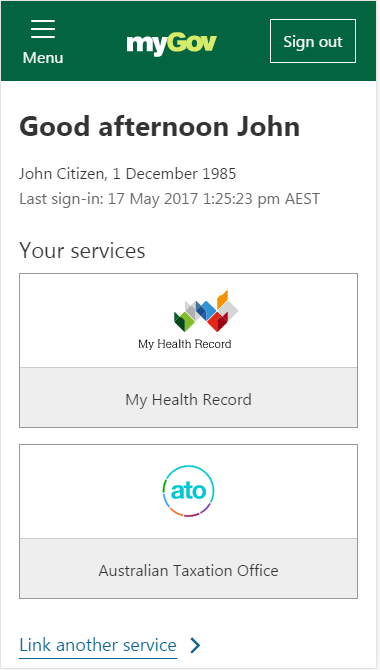DTA and Human Services give myGov a 'timely' makeover


myGov smartphone portal
The Department of Human Services (DHS) has unveiled a new-look myGov, developed with the help of the Digital Transformation Agency (DTA).
In a joint statement, Minister for Human Services Alan Tudge and Assistant Minister for Cities and Digital Transformation Angus Taylor called the revamp to the service website timely, claiming more than 242,000 logins are made every day.
Such updates to the portal, which boasted 10 million users as of August last year, includes simpler navigation through the website, as well as easier access on mobiles and tablets.
The changes were made following "hundreds of hours of user research" in more than 20 locations, which included speaking with people from "different walks of life", with different accessibility needs, of different ages, and in different geographical locations.
Other changes to myGov include the rewriting of the site's content into "simpler language"; a reduction in the amount of content on the site to make searching for information easier; as well as the addition of a "more prominent" government crest, in case the user forgets it is a Commonwealth initiative.
The latest improvements build on changes made last year which created a simpler sign-in process and the option for users to unlock their own accounts. These changes greatly improved usability and incorrect logins were reduced by 37 percent, Tudge and Taylor said.
myGov was launched in 2013 to make it easier for citizens to access a number of government services through a single web portal, with 10 agencies now providing access to their services through myGov: Medicare, the Australian Taxation Office (ATO), Centrelink, Australian JobSearch, My Health Record, My Aged Care, Child Support, Department of Veterans' Affairs, National Disability Insurance Scheme, and the Victorian Housing Register Application.
Savings will benefit taxpayers as a result of the changes, the ministers said, including AU$150 million saved on postage costs.
When the DTA was renamed from the Digital Transformation Office (DTO) in October, it also received a new remit, which included working with government departments and agencies to bring their digital services up to scratch.
Similarly, when the DTO was originally established in early 2015 it was charged with unifying government agencies and services online, initially tasked primarily with creating the single online myGov portal.
Nonetheless, the discovery and alpha phases of myGov's updates were completed at the DTA, with "digital experts" joining with DHS and the ATO to do user research and develop a prototype.
The joint team then moved across to DHS to deliver the beta product.
Both the DTA and DHS will continue to work together and carry out further research with users to identify further opportunities for improvement, the minister's statement continued, with four weeks of user research already slated following this latest release.
The ATO joined the myGov portal in 2014, allowing the completion of tax returns using a myGov account as authentication.
The myTax portal since suffered a stumble. At the time, users reported difficulties in linking their myGov login details with their ATO details in the first few days of the 2014-15 financial year.
The ATO also gave taxpayers an extension for lodging their tax return last year, after the myGov website suffered a glitch.
My Health Record, the Australian government's e-health record system, was originally switched on in 2012, but has since been rebranded from the "personally controlled e-health record system" to My Health Record.
Since its inception, the My Health Record has not been praised by all, with Dr Bernard Robertson-Dunn, who chairs the health committee of the Australian Privacy Foundation, calling the system a waste of money.
"It's cost AU$2 billion so far, it's costing over AU$400 million every year, but the government has never told us how it has improved health care or reduced health costs. All it is doing is putting patient data at risk," Robertson-Dunn said in August.
"They've built a glorified document management system. It's not really a health records system ... The data is contained mostly in PDFs, which are documents. It's difficult to search them."
A 2013 review of the system by former Minister for Health Peter Dutton had suggested the system be made available to opt-out in order to improve signup numbers, and in September 2015 the government responded by introducing legislation that saw e-health accounts automatically assigned to patients.
As of August, over 4 million users signed up to the automatic opt-in service.